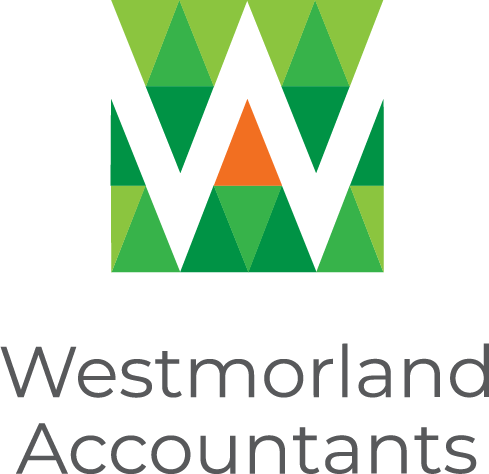
29 Jun New Tax-Free Childcare
A new Tax-Free Childcare scheme has been launched by the government. The government has started inviting parents to apply for Tax-Free Childcare beginning with parents of the youngest children and parents of disabled children.
- if you are an employer, you may be asked questions about the new scheme by your employees
- you may be interested in using the scheme yourself, particularly if you are self-employed, as this is the first childcare scheme providing a tax break for the self-employed.
What is Tax-Free Childcare?
Eligible parents will open an online childcare account. When a parent pays into the account, the government will pay in an extra 25%. So if £80 is paid into the account, the government will automatically add £20. The maximum government payments are £2,000 per child per year. This means annual childcare costs of £10,000 per child can be met by £8,000 of payments by the parents and £2,000 by the government.
For a disabled child, the maximum top-up payments are £4,000.
How much parents pay into their Tax-Free Childcare account, and when, is up to them.
Who can qualify for Tax-Free Childcare?
Parents need to be ‘working parents’ paying for ‘registered childcare’ for children under 12 (or under 17 for disabled children). If parents are not living together, the qualifying parent depends upon with whom the child usually lives.
The main criteria for a parent are:
- earns on average at least £120 a week
- earns less than £100,000 a year
- not receiving other support for childcare such as Child Tax Credit or Universal Credit.
The self-employed parent can average self-employment income across the year to meet the minimum income requirement.
If the parent has a partner, he/she also needs to be working and satisfy the criteria above.
It is possible for an individual who is not the parent to qualify if the child usually lives with them. The income criteria would apply to that individual (and their partner).
Partners are people who are:
- married or in a civil partnership, and live together in the same household, or
- a couple who live together as if they are married or in a civil partnership.
Registered childcare
Only childcare providers registered or approved by a UK regulator can sign up to receive Tax-Free Childcare payments. HMRC has written to childcare providers, asking them to sign up online for Tax-Free Childcare. Parents will be able to check online who is registered for the Tax-Free Childcare scheme.
Parents will send payments online from their Tax-Free Childcare account to the bank account of the registered childcare provider. Therefore when a provider receives a payment from a parent, this will include both their payment and the government contribution.
What if you have an Employer Supported Childcare scheme?
As an employer you may have set up and still run an Employer Supported Childcare scheme. Employer supported childcare, commonly by way of childcare vouchers, has provided tax and national insurance efficient benefits for many employers and employees. Many schemes have been set up under a salary sacrifice arrangement. The employee receives a childcare voucher which, within certain limits, provides income tax and national insurance savings.
An employee cannot benefit from both an Employer Supported Childcare scheme and the Tax-Free Childcare scheme. However employees are free to choose between the schemes if already in an Employer Supported Childcare scheme or join such a scheme before April 2018.
This choice is, of course, dependent on you continuing to offer a scheme. If you do continue to run a scheme, your employees will need to decide what to do. There are winners and losers when the two schemes are compared. For some, this will be a difficult choice to make.
The government has provided a ‘childcare calculator’ which provides an estimate of the financial support parents may be able to receive after they have answered a number of questions on their childcare costs and income. The calculator is available at www.gov.uk/childcare-calculator
Your childcare voucher provider should also be able to supply information to your employees to help them decide what is best for them.
30 hours free childcare
The government is introducing an extension to the current schemes available in England for free childcare for three and four year-olds. The current scheme provides 570 hours of free early education or childcare over 38 weeks of the year (typically taken as 15 hours a week over 38 weeks). It is available for all three and four year-olds. The 30 hours scheme potentially extends the entitlement to an additional 570 hours. However not all children will be entitled to receive the extra hours. The criteria for the extension are similar to the criteria that apply for the Tax-Free Childcare scheme – for example the requirement for parents to be working and not earning above £100,000 a year.
The scheme will begin in September 2017 but eligible parents can apply for the Tax-Free Childcare and the 30 hours schemes through one online application. See the link below.
New government website – Childcare Choices
The government has recently launched a website – Childcare Choices – which guides parents through the various ways help is, or will be available. Please see: www.childcarechoices.gov.uk
The childcare calculator which has been referred to above in the section ‘what if you have an Employer Supported Childcare scheme?’ is also useful.
Currently parents with a child under four on 31 August 2017 or disabled can apply through the Childcare Choices site. Parents will be able to apply for all their children at the same time, when their youngest child becomes eligible.
Other parents can request to receive an email from the government as to when they are able to apply. The link is also available on the Childcare Choices site. All eligible parents will be able to join the scheme by the end of 2017.
Who Gains with the new scheme?
Those working single parents who have annual child care costs at or above £5,000.
Working couples with annual child care costs at or above £9,500.
Self-employed couples providing they meet the eligibility criteria.
Who Loses with the new scheme?
Couples where one parent is not working.
Couples who have a single child.
Families where the childcare costs are minimal such as those who have children at school full time and so rely on part time care from Childminders or After School Clubs.
Employers no requirement for company/payroll intervention and so no NIC relief.
Where either parent earns in excess of £100,000 per annum.
Need Help?
If you are affected by the changes or would like to discuss your options in more detail please contact us

